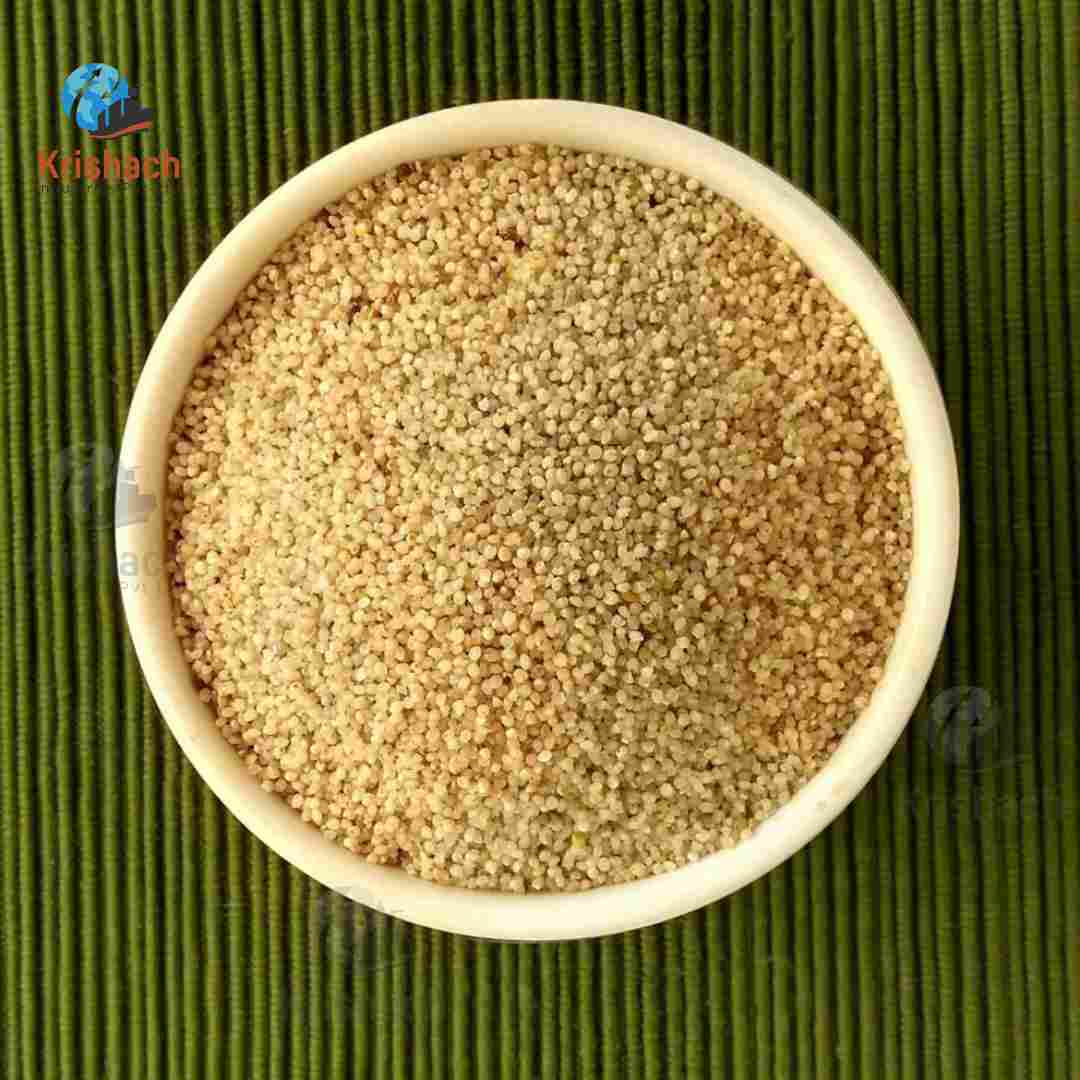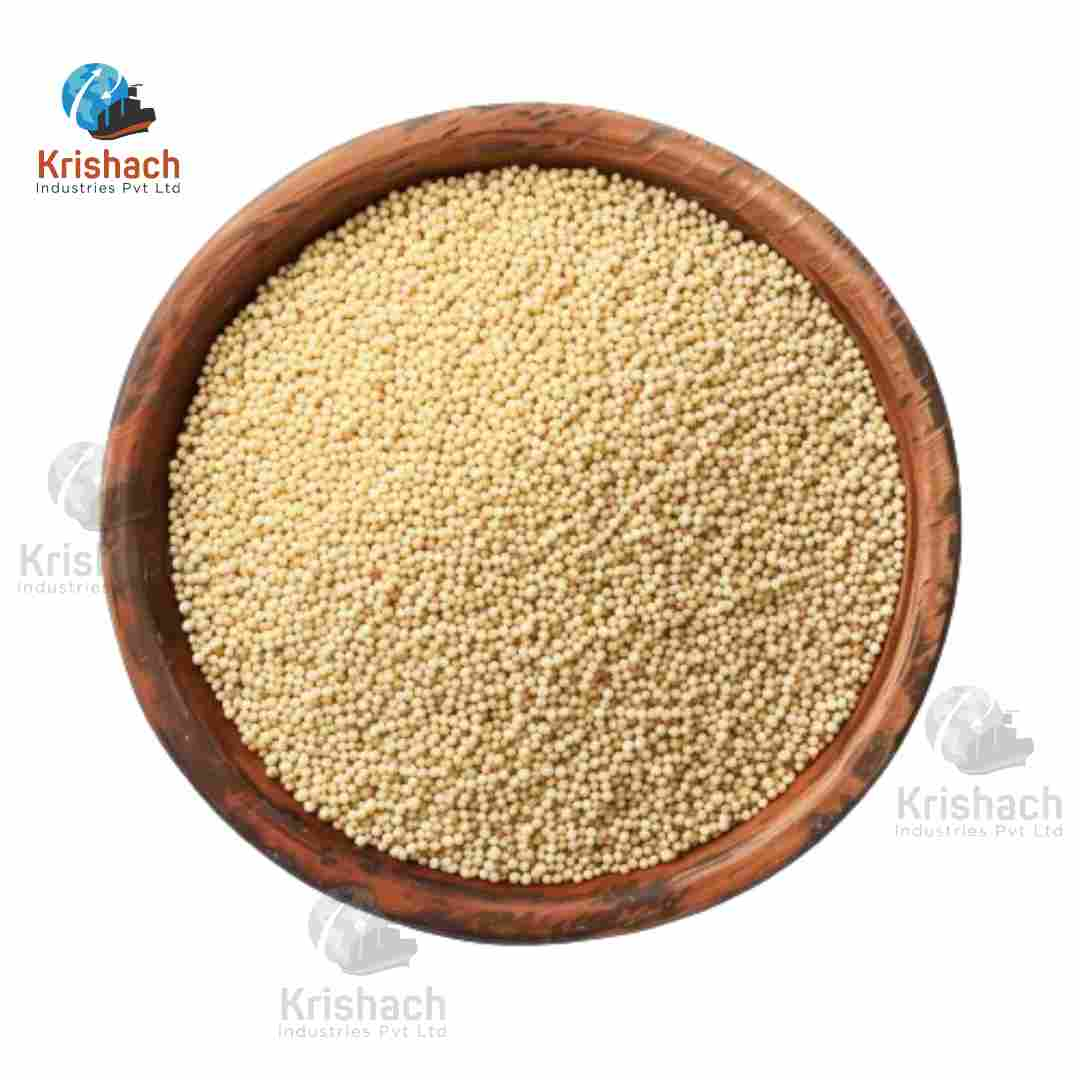Little Millets, also known as Moraiyo, is a tiny, nutritious cereal grain that belongs to the genus Panicum. It is one of the smallest millet varieties and is cultivated in various parts of India, particularly in Tamil Nadu, Karnataka, and Andhra Pradesh. Little Millets have been a traditional food staple in these regions for centuries due to their resilience to harsh growing conditions and their nutritional benefits.
Key Characteristics:
Appearance: Little Millet grains are very small and round, typically ranging in colour from light brown to greyish-brown. They are encased in a thin, hard husk.
Size: The grains are approximately 1-1.5 mm in diameter, making them among the smallest of the millet varieties.
Texture: When cooked, Little Millets have a slightly chewy texture with a mild, nutty flavour.
Aroma: The grain has a subtle, earthy aroma that becomes more noticeable when cooked or roasted.
Flavors: The flavour is mild and nutty, making it a versatile ingredient for a variety of dishes.
Specification:
Uses:
Food Products: Little Millets are used in a variety of culinary applications:
Pilafs and Stews: Little Millets can be cooked as a side dish or used in pilafs and stews, like other grains.
Porridge: They are often used to make nutritious porridge or gruel, enjoyed as a breakfast dish or light meal.
Flour: Ground into flour, Little Millets can be used for baking bread, cakes, and cookies or for making traditional dishes like dosas and idlis.
Snacks: Roasted or puffed Little Millets are used in snacks and breakfast cereals.
Animal Feed: The millet is also used as fodder for livestock due to its high nutritional content.
Traditional Remedies: In some cultures, Little Millets are used in traditional medicine for their health benefits, including their role in improving digestion and managing diabetes.
Little Millets’ high nutritional value, versatility, and adaptability to challenging growing conditions make them an important crop for both dietary and agricultural purposes. Their use in traditional and modern recipes highlights their significance in maintaining food diversity and promoting sustainable agriculture.
Nutritional Value:
Little Millets are highly nutritious and offer several health benefits. They are rich in dietary fiber, protein, and essential minerals such as calcium, iron, and magnesium. Little Millets are also a good source of B-vitamins, including niacin and riboflavin. Their low glycemic index makes them beneficial for managing blood sugar levels and promoting overall health. The high fiber content aids in digestion and helps in maintaining a healthy heart.
Benefits:
Little millets are rich in fiber, protein, vitamins, and minerals. They offer numerous health benefits, including aiding digestion, regulating blood sugar levels, and supporting weight management.
Cultivate Seasons for India:
Little millets are typically cultivated during the kharif season in India, with sowing usually done in June-July and harvesting in October-November.
Our Services
Reliable Sourcing:
Reliable sourcing of Little Millets (Moraiyo) involves building strong relationships with farmers in key growing regions, such as Tamil Nadu, Karnataka, and Andhra Pradesh, where these millets thrive. Partner with farmers who use sustainable and organic farming practices to ensure that the millets are non-GMO and free from synthetic pesticides and fertilizers. Collaborating directly with these farmers and cooperatives helps maintain the grain’s purity and high quality. Establishing traceability and adherence to best agricultural practices ensures a consistent and reliable supply of premium Little Millets.
Premium Quality Assurance:
Premium quality assurance for Little Millets involves rigorous quality control measures throughout the sourcing and processing stages. The millets are tested for purity, moisture content, and the absence of contaminants such as pesticides, heavy metals, and microbial agents. Certifications such as ISO, HACCP, FSSAI, and USDA Organic validate adherence to international food safety and quality standards. Regular inspections ensure that the millets meet nutritional and sensory standards, including color, size, and flavor, preserving their high quality and health benefits.
Processes:
The processing of Little Millets involves several key steps to ensure premium quality:
Harvesting: Little Millets are harvested when the grains are fully mature. The harvested millet is allowed to dry in the field to reduce moisture content and prevent spoilage.
Cleaning: The millet undergoes mechanical cleaning to remove large debris such as stones, dirt, and other foreign materials. This is achieved using separators and air blowers.
De-Husking: The outer husk of the millet is removed using de-husking machines, which improves the texture and usability of the grain.
Sorting: The grains are sorted by size using sieves and gravity separators to ensure uniformity. Advanced optical sorters are used for color sorting to remove discolored or damaged grains.
Grading: The millet is graded based on quality parameters such as size, color, and overall appearance. This step ensures that only high-quality grains are selected for packaging.
Drying: If necessary, the millet is further dried to achieve optimal moisture levels (typically below 10%) to prevent mold and spoilage during storage.
Packaging, Shipping & Delivery
Packaging:
Bags and Pouches:
For Little Millets (Moraiyo), high-quality food-grade materials such as laminated multi-layer pouches (made of materials like PET, PE, BOPP, and Aluminium foil) are used. These bags are moisture-proof and help retain the freshness, flavours, and aroma of the spices. Zip-lock pouches, stand-up pouches, and resealable bags are also popular for smaller quantities.
Polypropylene (PP) Woven Bags:
These are the most common types of bags used for packaging large quantities (25 kg and 40 kg) of Little Millets (Moraiyo). They are made of woven polypropylene material, which is strong, lightweight, and durable, providing excellent resistance to tearing and damage during handling and transport.
Laminated Bags:
For additional protection against moisture and humidity, PP woven bags can be laminated with a layer of plastic film. This lamination creates a barrier against moisture, ensuring the spices stay dry and fresh during transportation and storage.
Multi-Wall Paper Bags:
These bags consist of several layers of kraft paper, which provide strength and are often lined with a plastic or polyethylene layer to offer protection against moisture and humidity. They are environmentally friendly and widely used in many markets for exporting food products.
Vacuum-Sealed Packaging:
This type of packaging removes air from the package before sealing, which helps prevent oxidation and moisture build-up, preserving the quality and extending the shelf life of the spices.
Paper or Carton Boxes:
After the packaging, the smaller bags or pouches are placed in corrugated cardboard cartons or paper boxes. These cartons are sturdy, stackable, and protect the contents from physical damage during handling and transportation.
Palletization and Wrapping:
Cartons or sacks are often stacked on wooden or plastic pallets and wrapped with stretch film or shrink wrap. This provides stability, reduces the risk of damage during transport, and makes handling more efficient.
Export Documentation:
Handle all necessary export documentation, including phytosanitary certificates, certificates of origin, and any specific certifications required by the importing country.
Efficient Shipping:
Partner with reliable freight forwarders and logistics companies to ensure timely and safe delivery of goods. Offer multiple shipping options (air, sea, or land) based on customer preferences.
















